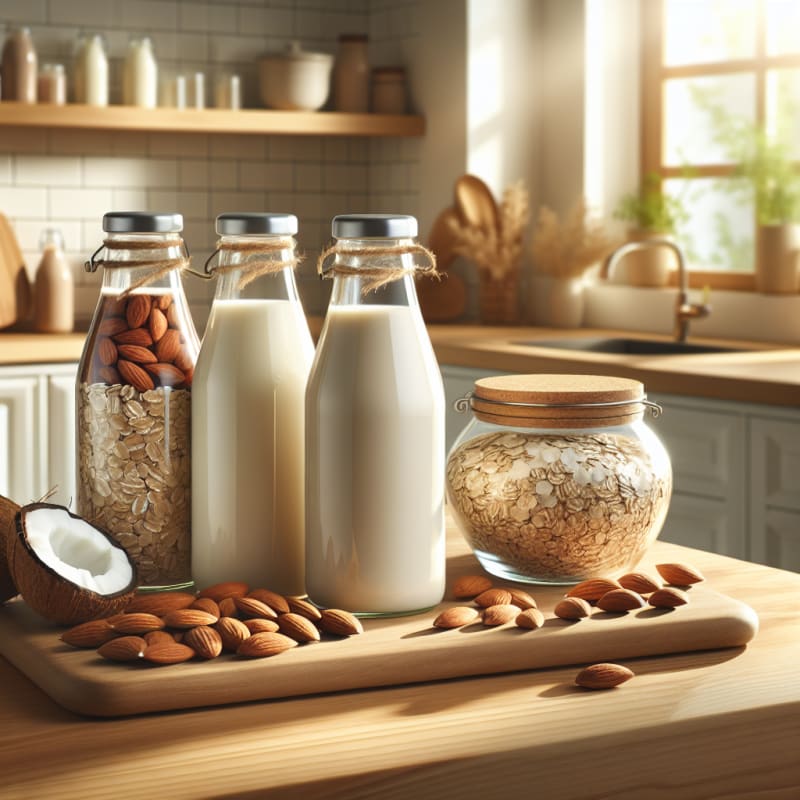The Rise of Lactose-Free and Dairy-Free Milk: How Global Trends Are Shaping Consumer Choices in 2025
From morning coffee to protein shakes, milk is a staple in millions of diets worldwide. But as awareness of lactose intolerance and milk allergies grows, so does the demand for lactose-free and dairy-free milk. In 2025, this shift isn’t just about dietary restrictions—it’s about health, sustainability, and innovation.
Why Lactose-Free and Dairy-Free Milk Are Booming
According to Coherent Market Insights, lactose intolerance affects up to 75% of the global population. This widespread condition has fueled a surge in lactose-free product innovation. Meanwhile, the Bullvine Dairy Trends Report 2025 highlights that high-protein and lactose-free dairy products are among the fastest-growing segments in the dairy industry.
At the same time, the Plant-Based Milk Trends and Forecast Report 2025–2032 projects the global plant-based milk market to reach over $25 billion, driven by both established brands and innovative startups. Consumers are no longer choosing between taste and tolerance—they’re demanding both.
Understanding the Difference: Lactose-Free vs. Dairy-Free
| Type | Contains Dairy? | Contains Lactose? | Examples |
|---|---|---|---|
| Lactose-Free Milk | Yes | No | Lactose-free cow’s milk, lactose-free yogurt |
| Dairy-Free Milk | No | No | Almond milk, oat milk, soy milk, coconut milk |
Lactose-free milk is real dairy milk with the lactose (milk sugar) removed or broken down using the enzyme lactase. It’s ideal for people with lactose intolerance but who still want the taste and nutrition of dairy. Dairy-free milk, on the other hand, is made entirely from plants and is suitable for vegans or those with milk allergies.
Health Benefits Driving Consumer Choices
1. Easier Digestion
For people with lactose intolerance, consuming regular milk can cause bloating, gas, and discomfort. Lactose-free milk eliminates these symptoms while maintaining calcium and protein levels.
2. Allergy and Sensitivity Management
Those with a true milk allergy must avoid all dairy proteins. Dairy-free milk from oats, almonds, or soy provides a safe and nutritious alternative.
3. Sustainability and Ethics
Plant-based milks often have a smaller environmental footprint. Consumers are increasingly choosing them for ethical and ecological reasons, aligning with broader sustainability goals.
4. Senior Health and Nutrition
As digestion changes with age, many seniors experience reduced lactase production. Lactose-free milk offers a gentle, nutrient-rich option for maintaining bone health without discomfort.
Global Market Trends in 2025
The Towards Food & Beverage Insights Report notes that dairy-free products are now mainstream, with major retailers dedicating entire sections to plant-based alternatives. The trend is especially strong in North America, Europe, and Asia-Pacific, where consumers are prioritizing gut health and sustainability.
- North America: Rising lactose intolerance awareness and strong vegan movements.
- Europe: Government-backed labeling initiatives for clear allergen information.
- Asia-Pacific: Rapid adoption of lactose-free milk due to high intolerance rates.
Comparing Popular Milk Alternatives
| Milk Type | Main Ingredient | Key Nutrients | Best For |
|---|---|---|---|
| Lactose-Free Cow’s Milk | Dairy (lactose removed) | Protein, calcium, vitamin D | Lactose-intolerant consumers |
| Oat Milk | Oats | Fiber, beta-glucans | Heart health and sustainability |
| Almond Milk | Almonds | Vitamin E, low calories | Low-calorie diets |
| Soy Milk | Soybeans | Protein, isoflavones | Vegan protein replacement |
| Coconut Milk | Coconut | Medium-chain triglycerides (MCTs) | Keto and paleo diets |
Innovation and Label Transparency
As consumers demand more transparency, brands are improving labeling to clearly indicate whether products are lactose-free, dairy-free, or vegan. Regulatory bodies are pushing for consistency to reduce confusion, especially for those managing allergies or intolerances.
Apps like Food Scan Genius are revolutionizing how shoppers understand ingredients. By scanning a product’s barcode, users can instantly see if it’s safe for their dietary needs. One user shared, “I used to spend 10 minutes reading labels. Now, Food Scan Genius tells me in seconds if a milk is lactose-free or dairy-free—it’s a game changer.”
AI and Data Shaping the Future of Milk Alternatives
Artificial intelligence and biotechnology are helping brands create milk alternatives that mimic the taste and texture of dairy more closely than ever. From precision fermentation to enzyme optimization, innovation is accelerating across the industry.
How to Choose the Best Lactose-Free or Dairy-Free Milk in 2025
- Check the label: Ensure it clearly states “lactose-free” or “dairy-free.”
- Compare nutrients: Look for calcium and vitamin D fortification.
- Consider your goals: Whether you want protein, low sugar, or sustainability, there’s an option for you.
- Use smart tools: Apps like Food Scan Genius can help identify hidden ingredients or allergens.
Why This Trend Matters for Everyone
The rise of lactose-free and dairy-free milk isn’t just about intolerance—it’s about inclusivity, innovation, and informed choices. As more people seek personalized nutrition, these products are helping redefine what “milk” means for the modern consumer.
FAQs About Lactose-Free and Dairy-Free Milk
1. What’s the difference between lactose-free and dairy-free milk?
Lactose-free milk is real dairy milk with the lactose removed, while dairy-free milk contains no animal ingredients at all.
2. Is lactose-free milk suitable for people with milk allergies?
No. Milk allergies are reactions to milk proteins, not lactose. People with milk allergies should choose dairy-free milk instead.
3. Which is healthier: plant-based milk or lactose-free milk?
It depends on your needs. Lactose-free milk offers complete dairy nutrition, while plant-based milk can provide fiber and lower fat content.
4. How can I find the best lactose-free milk brands in 2025?
Look for trusted brands highlighted in the 2025 Dairy Trends Report and use ingredient scanning apps for verification.
5. Are plant-based milks environmentally friendly?
Generally yes, though sustainability varies by ingredient. Oat and soy milks tend to have lower water use and emissions than almond or coconut milk.
6. How can Food Scan Genius help me choose the right milk?
By scanning a product’s barcode, Food Scan Genius instantly shows whether it’s lactose-free, dairy-free, or vegan—making shopping faster and safer for sensitive consumers.
Final Takeaway
In 2025, the choice between lactose-free and dairy-free milk is more than a dietary decision—it’s a reflection of global health awareness and sustainability values. Whether you’re lactose-intolerant, vegan, or simply curious, understanding what’s in your milk empowers you to make smarter, healthier choices. And with tools like Food Scan Genius, transparency is finally at your fingertips.





